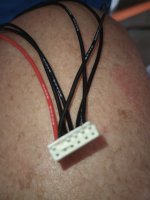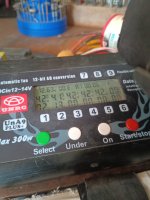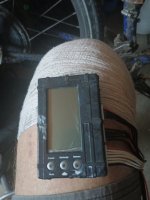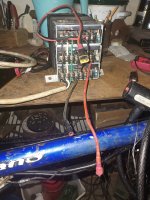Hi hope I have this in correct place.
Being on a pensioner on a tight budget, but being known to be good at fixing things, I have now collected (free) four electric bikes that need fixing. I'm focusing on the two I have actually got working (with homemade SLA battery packs). (one is 24v one 36v). Next I Bought a lot of cells very cheap. (Li-Pol and 18650). I have got as far as making two different 24v packs one from 18650 cells and one from the pouch cells (both packs made from identical cells atm).
So first problem, the one made from pouch cells suddenly cuts out, disconnect it and start again, and works till it cuts out again, cuts out under load, I suspect the BMS, but could it be the pack not delivering enough current? And ideas?.
The 18650 cell battery I built (temporary without a BMS atm) appears to work ok, but I expected more power, (it has 7 sets of 5 cells). Would more cells per pack eg 7 sets of 9 give me more power, or just extend range?
Now the big question I also bought a lot of pouch batteries, trouble is most are not marked, and various sizes,they appear to be old e-bike batteries or similar, most have only one or two duff cells, I'm thinking of replacing the duff cells, with good ones from other packs, trouble is they are different size and shape, so far from identical. Any help or advice on this (even don't do it) would be welcome. I have loads of these so to me it would be well worth the effort. Literally any hints on any safe way to mix and match would be very welcome
Thankyou... optimistically in anticipation
Note: I'm a pensioner, new to all this inc computers and forums, so be nice.... LOL
Being on a pensioner on a tight budget, but being known to be good at fixing things, I have now collected (free) four electric bikes that need fixing. I'm focusing on the two I have actually got working (with homemade SLA battery packs). (one is 24v one 36v). Next I Bought a lot of cells very cheap. (Li-Pol and 18650). I have got as far as making two different 24v packs one from 18650 cells and one from the pouch cells (both packs made from identical cells atm).
So first problem, the one made from pouch cells suddenly cuts out, disconnect it and start again, and works till it cuts out again, cuts out under load, I suspect the BMS, but could it be the pack not delivering enough current? And ideas?.
The 18650 cell battery I built (temporary without a BMS atm) appears to work ok, but I expected more power, (it has 7 sets of 5 cells). Would more cells per pack eg 7 sets of 9 give me more power, or just extend range?
Now the big question I also bought a lot of pouch batteries, trouble is most are not marked, and various sizes,they appear to be old e-bike batteries or similar, most have only one or two duff cells, I'm thinking of replacing the duff cells, with good ones from other packs, trouble is they are different size and shape, so far from identical. Any help or advice on this (even don't do it) would be welcome. I have loads of these so to me it would be well worth the effort. Literally any hints on any safe way to mix and match would be very welcome
Thankyou... optimistically in anticipation
Note: I'm a pensioner, new to all this inc computers and forums, so be nice.... LOL





